A B C D E F G H I J K L M N O P Q R S T U V W X Y Z
Click on any portrait to view (opens in new window)
1790-1863
 Solicitor and politician.
Solicitor and politician.Born at Kings Worthy, Hampshire, eighth of 10 children (fourth son) of a lawyer, he was articled to his father in 1813. He was a partner in G & H Faithfull, one of the town's largest practices, acting for Thomas Read Kemp and became a Brighton Improvement Commissioner. He was a regular preacher to the non-conformist sect that he founded with a chapel in Ship Street, of which Kemp was briefly an adherent until returning to the Anglican church. Faithfull moved his ministry from the Ship Street Chapel (later Holy Trinity, now Fabrica) to the new Trinity Independent Presbyterian Chapel at 115-116 Church Street, popularly known years after as Mr Faithfull's Chapel. In 1832 he was elected one of the first MPs for Brighton under the Reform Act as a Radical. After losing the seat in January 1835 he founded The Brighton Patriot and Lewes Free Press the following month to promote his views, lost the election again in 1837 and closed the paper in 1839 when Chartist disturbances alienated the readership. As a solicitor he later represented new railway companies. He lived at Hurst Villa, Hurstpierpoint prior to moving to Brighton in the early 1840s. He owned Chichester House in Chichester Terrace (1844-1863). He is buried in the churchyard at Holy Trinity, Hurstpierpoint and left effects under £4,000.
Lithograph portrait by Robert Martin [National Portrait Gallery]
• 15 Ship Street [1851]
• Snowden House, 34 Buckingham Place [1842-1863, deathplace]
1828-1880
Born at Wadleigh, Berkshire, son of the 7th Earl, whom he succeeded in 1844, he also inherited titles as 10th Lord Falconer of Halkertoun, 2nd Baron Kintore and 8th Lord Keith of Inverurie and Keith Hall.
• 30 Palmeira Square [residence 1861-1871]
1878-1952
Born in Birmingham, the son of a brass-founder, he was home-schooled and encouraged in his writing ambitions. He graduated from Westminster School of Art and spent much of his time cycling around the south-east counties. After a year of marriage he and his new wife, an Amrican, emigrated in 1904 to live with her parents in New Jersey but he also had an apartment in New York and worked as a scenery artist at the Astor Theater, while writing in his spare time. They returned in 1910 to live in Kent, moving in literary circles and often visiting Brighton. Novels appeared almost annually, his output only partly limited by serving as a front-line journalist during World War I. He lived in Withdean in the 1920s and 1930s; addresses with which he is associated may relate to an extra-marital relationship that began in 1921. Divorce proceedings began in 1936, citing his adultery, after which in 1938 he re-married and settled in Eastbourne, the house now marked by a plaque, until his death. He left £9,478 4s 11d. His ashes were sprinkled on the head of the Long Man of Wilmington.
• Sunnyside, London Road, Withdean [1921-1937]
• Flat 2, Hove House FLats, 20 St Aubyns [1925-1928] • 37 Braemore Road
1914-1986
 Boxer.
Boxer.British and Empire heavyweight boxing champion, the 'Tonypandy Terror'. He was the (non-resident) landlord of the Royal Standard PH after his retirement from the ring in 1953.
Right: Farr in 1936
• 58-59 Queen's Road
1833-1884
FAWCETT, Dame Millicent Garrett
1847-1929
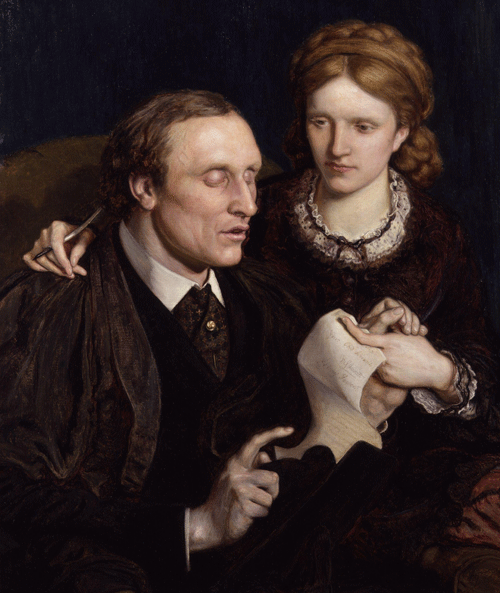 Henry Fawcett. Academic, politician.
Henry Fawcett. Academic, politician.Blinded in a shooting accident in 1858. He became Professor of Political Economy at Cambridge in 1863 and was the Liberal MP for Brighton 1865-1874, becoming MP for Hackney 1874-1884. W E Gladstone appointed him Postmaster-General in 1880. He introduced Post Office savings stamps, postal orders, parcel post, telephone trunk lines and licensing for pay-phones. He also campaigned for free and compulsory private education.
Dame Millicent Garrett Fawcett. Campaigner.
His wife was a leading advocate for women's suffrage, who co-founded Newnham College, Cambridge in 1871.
Image: Henry and Millicent Fawcett by Ford Madox Ford (1872)
• York Place
1787-1855
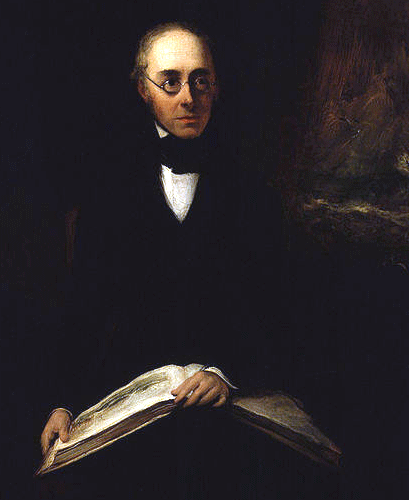 Artist.
Artist.Prolific and successful English watercolourist who was president of the Old Water-Colour Society (later the Royal Society of Watercolours) from 1831 until his death. He won a gold medal at the 1824 Paris Salon, as did John Constable. He lived for a time in Brighton but later moved to Worthing, where he died. However, he is buried in St Andrew's Churchyard, Hove.
Image: portrait by Sir William Boxall
• 2 Lansdowne Place [residence]
• St Andrew's Churchyard, New Church Road
1835-1886
FILMER, Lady Mary Georgina
1838-1903
 Sir Edmund Filcher. Politician.
Sir Edmund Filcher. Politician.Elected Conservative MP for West Kent in 1859, following his father who held the seat from 1838 to 1857. He did not stand in 1865 but was returned for Mid Kent in 1880, resigning in 1884 by taking the Chiltern Hundreds. He died in Hove.
Lady Mary Georgina Filmer. Artist.
[née Cecil], his wife, was a pioneer of photomontage and photographic collage, such as the family portrait here.
• 2 Queen's Gardens [residence 1885]
• Waldeck House, The Drive [residence 1886, deathplace]
1926-2016
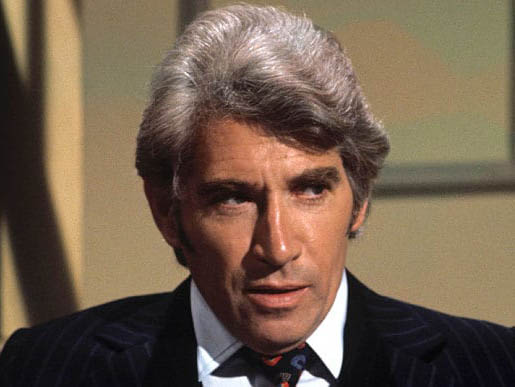 Actoer.
Actoer.Born in Farnworth, Lancashire, the son of a butcher, in whose family firm he trained. He bagan acting in Farnworth Little Theatre in 1951 and after a period in rep, won a scholarship to RADA. One stage he was particularly assocaietd with The Royal Court, Chichester Festival and National theatres. He was nominated for an Oscar for his role as Iago in the film version of Othello (1965). Locally he was patron of the Academy of Creative Training and its Lantern Theatre.
• 1 Wyndham Street [residence c1979-2009]
1826-1903
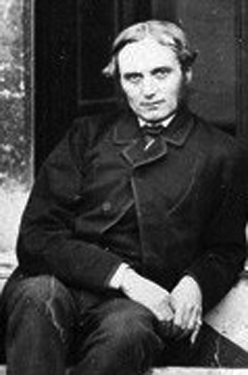 Historian.
Historian.Appointed tutor to the future Edward VII in 1859 and became the Prince of Wales's private secretary in 1862 and Keeper of the Privy Seal in 1865. He was a Hove county magistrate (1896). His wife was Mary Louisa Jackson (whose sister Julia married first Herbert Duckworth and was mother of the publisher Gerald Duckworth, and second Leslie Stephen and was the mother of Vanessa Bell and Virginia Woolf). His eldest son H A L (Herbert Albert Laurens) Fisher (1865-1940) was also a noted historian; another of his seven sons was Admiral Sir William Wordsworth Fisher (1875-1937) and the youngest, Edwin Fisher (1883-1947), was chairman of Barclays Bank from 1936 until his death. His third of four daughters, Adeline, married Ralph Vaughan Williams in 1897.
• 19 Second Avenue [family residence 1880-1903]
1915-1999
A gas fitter by trade, he was a Brighton borough councillor for 28 years (1957-1985) and East Sussex county councillor. He was reportedly suspended from the Labour Party for supporting the republican side in the Spanish Civil War. His twin sons were also politicians, Reg being a Brighton councillor, Rod stood as the Labour parliamentary candidate for Brighton Kemptown in 1983. His son Brian was also a councillor and was mayor of Brighton in 1989-1990.
• Fitch Drive
PERSONAL
• 114 Ladysmith Road [residence 1939]
• 37 Auckland Drive [residence 1956]
1824-1901
 Peer.
Peer.The son of the 1st Earl, the eldest illegitimate son of William IV, and Mary Wyndham, illegitimate daughter of George O'Brien Wyndham, 3rd Earl of Egremont. He married his cousin. Following the suicide of his father in March 1842, he purchased several commissions in the Scots Fusilier Guards and the Grenadier Guards. He died in Hove and was buried in Cuckfield.
Image: Caricature by Spy, suggestive of Brighton seafront [Vanity Fair, February 1882]
• 23 Palmeira Square [residence 1865-1901, deathplace]
1756-1837
Née Maria Anne Smyth, she was a Catholic, twice married and widowed before contracting a morganatic (constitutionally illegitimate) marriage with the then Prince of Wales (the future George IV) in 1785. The relationship lasted until 1794 and ended prior to his intended marriage to Caroline of Brunswick.
• Fitzherbert Drive
• St John the Baptist Church, Bristol Road [tomb and memorial tablet]
PERSONAL
• Steine House, 55 Old Steine [residence 1804-1837]
1801-1866
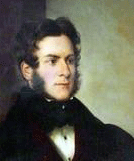 Entrepreneur.
Entrepreneur.From 1836 he created the new town of Fleetwood on the Lancashire coast.
• 34 Adelaide Crescent
 Stage and film actor.
Stage and film actor.• 6 Arundel Terrace [residence 1953-]
1810-1873
Served as Senior Mate on HMS Beagle before being promoted to officer rank. In northern Canada Forsyth Bay and Forsyth Point on Prince of Wales Island are named after him.
• 5 Medina Villas
1923-1984
 Actor.
Actor.Brighton-born character actor who often played comedy (eg, in six of the Carry On films). Hemade about 30 films between 1960 and his death although his television work was much more prolific. He appeared in one film made in Brighton: Smokescreen (1964) on which he had no screen credit.
1911-1987
 Actore.
Actore.His theatrical career began at the Palace Pier theatre in Brighton and he was in the original West End cast of Terence Rattigan's The Deep Blue Sea in 1952. He had character parts in a number of films from 1952 to 1957 but thereafter worked exclusively in television after landing the part of Detective Superintendent Tom Lockhart in the 43-episode series Murder Bag, followed by promotion to Chief Superintendent in 12 episodes of Crime Sheet and then in the best-known incarnation, No Hiding Place, which ran for 235 episodes between 1959 and 1967. Thereafter he continued acting in minor parts until the year of his death. He lived at various places in Sussex, latterly in Hove.
1912-1992
 (Betty Pamela Vincent Franckeiss). Stage and screen actres.
(Betty Pamela Vincent Franckeiss). Stage and screen actres.She appeared in the films The Public Life of Henry the Ninth (1935) and Me and My Girl (1939). She was married to Howard Johnson MP.
• Valetta, 71 Dyke Road Avenue [residence]
1808-1891
After qualifying as a lawyer he joined the firm of Freshfields, founded by his father and was solicitor or the Bank of England 1840-1869 and the London Brighton & South Coast Railway until 1867. Pennant Lodge was built for him in 1851. He was member of parliament for Dover 1865-1868 and 1874-1885. A memorial in St Andrew's Church, Hove also names his wife Elizabeth Sims Freshfield (1813-1849) and his daughters Constance Emilie, Henrietta and Mary, all of whom also died in 1849. He is named along with his father on the grave of his sister, Anna Maria Freshfield (d 1848), in the churchyard. A window at St John's Church also commemorates his wife. He left £259,476 16s 3d (equivalent to £26m in current values).
• Freshfield Place
• Freshfield Road
• Freshfield Street
PERSONAL
• Pennant Lodge, 30 West Drive [residence 1851-1868]
• 9 Eastern Terrace [residence 1881-1889]
• Collingwood House, 127 Marine Parade [final residence 1889-1891]
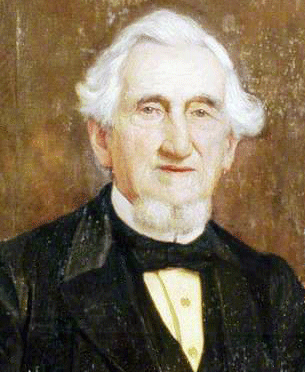 Tradesman, developer and landowner.
Tradesman, developer and landowner.Born in Lewes, he developed estates to the north of Brighton, including Prestonville. In 1851 he was the local postmaster in Preston, running the grocery, drapery and post office. His father, also Daniel, had a leather shop in Edward Street. By 1871 he lived at Highlands in Hamilton Road, then at Stonleigh in Preston Road (before 1891 until his death). He left £20,760 4s 11d (equivalent to £2.0m in current values).
• Highlands, Hamilton Road [residence 1871-1891]
† Stonleigh, 153 Preston Road [residence 1891-1902]
1855-1921
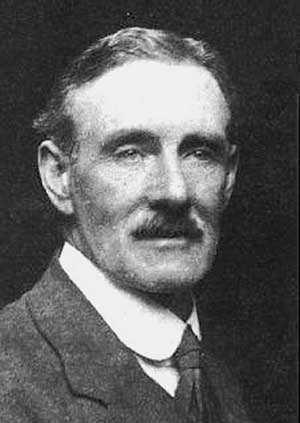 Photographer and cinema pioneer.
Photographer and cinema pioneer.Born William ('Willie') Green, he left school at the age of 13 in 1869 to become apprenticed to Polish-born photographer Maurice Guttenberg in Bristol. Within three years of marrying Victoria Mariana Helena Friese in 1874 and changing his name to Friese Greene (with an e), he was on his way to developing a successful business as a society portrait photographer in the Bath, Plymouth and Bristol. He moved to London in 1885 and around 1887 went into business with Esmé Collings as Friese Greene & Collings. In London they had three studios and two in Bath. They also then opened a studio at 69 Western Road, Hove. Through his association with Bath instrument maker John Arthur Roebuck Rudge, he became interested in the illusions of movement that were possible with optical (magic) lanterns. On 21 June 1889 he filed a provisional patent application (no 10131) for 'improved apparatus for taking photographs in rapid series', which he elsewhere referred to as a 'chronophotographic camera'. A complete specification was lodged with the Patent Office on 13 March 1890, granted on 10 May 1890. This patent is sometimes referred to as the 'master patent' for cinematography.
His partnership with Collings ended on 1 May 1888 and Friese Greene lost his connection with Brighton as the studio at 69 Western Road, Hove was kept by Collings.
Friese Greene was declared bankrupt in 1891. He sold the patent for his chronophotographic camera for £500 but the patent was not renewed and later lapsed in 1894. However, the validity of his 'master patent' was upheld in the USA in 1910. In July 1907, as the 'Inventor and Patentee of the Master Patent for Animated Photography', he petitioned the Privy Council for an extension of the term of 'the said Letters Patent' and a notice was published inviting anyone opposing the petition to enter a caveat. The 1893 patent he wanted to extend was a clever idea for creating back-projected moving photographic scenery in theatres but not the original 1888 patent. He certainly had a fertile mind and filed numerous patent applications during the 1890s and early 1900s for such ideas as inkless printing, measuring electrical currents, panoramic photography, X-rays, a cigar and pipe lighter and gun cartridges. One of his least known ideas was a precursor of optical sound recording. One of his most far-sighted was photo-typesetting, for which he sold the rights to a newspaper tycoon. His method for rapid printing of cigarette cards and for printing photographs in magazines were also exploited commercially.
He was still undischarged from his 1891 bankruptcy when he was again declared bankrupt at Colchester in November 1903. In May 1904 at the Old Bailey, Friese Greene was found guilty of obtaining credit for £20 and upwards without disclosing that he was an undischarged bankrupt. He was sentenced to two months' imprisonment. By now Friese Greene was well on the way to developing a colour film process, with which he had been experimenting since 1898. In 1905 he moved to Brighton, renting a house at 24 Arundel Street and taking a 14-year lease on premises at 203a Western Road, Brighton, where he opened a photographic studio and charged 1s (5p) for a sitting. This was also the business address of his Original Cinematograph Company from 1905 and of the Natural Photography Studio Ltd, the company formed to develop his work in colour cinematography. He became part of a circle that included Captain Lascelles Davidson, Dr Benjamin Jumeaux, E F Grün and Otto Pfenninger. Through his association with Davidson and Jumeaux he had the use of a workshop in an outbuilding at the back of 20 Middle Street, Brighton. The building bears a plaque commemorating his original experiments in cinematography, which is incorrect. The address on his 1889 patent is in King's Road, Chelsea, and his famous first successful trial film was made in Hyde Park. Filmographies list a 'Brighton street scene' of 1888 in his name, for which evidence has not been found. How long he stayed in Middle Street is not known—details are sketchy but it was probably only months. Blame the error on the not always reliable biography, Friese-Greene: Closeup of an Inventor by Ray Allister. The plaque was unveiled in September 1951 by Michael Redgrave, one of the stars of the film The Magic Box based on the book.
The growing family moved to 9 Worcester Villas, Hove in 1907. His work on colour films, a patent for which he applied in 1905, was overtaken by the efforts of G A Smith and Charles Urban with Kinemacolor. Lawsuits over colour cinematography patents ensued in 1912. After losing his case in the lower courts, Friese Greene's claim was finally upheld on appeal in the House of Lords. He was unable to exploit his advantage, however.
Friese Greene left Hove in 1913 after he was made bankrupt for the third time. In 1915 he and his family, with three sons away on war service, were discovered to be living in considerable poverty. With financila help from some in the film industry, he lived the remainder of his life in London and continued to work on colour photography until his death, which occurred at a meeting of film distributors about the crisis facing the British industry, where he made an impassioned speech. Legend has it that he had 1s 10d (9p) in his pocket, romantically identified as the price of a cinema ticket. He is buried in Highgate Cemetery beneath a monument by Sir Edwin Lutyens, paid for by the film industry. It describes him simply as 'the inventor of kinematography'.
His son Claude continued the work on colour cinematography and made a film, The Open Road, which can be seen online.
• 24 Arundel Street [residence 1905-1907]
• 20 Middle Street [workshop 1905]
• 9 Worcester Villas [residence 1907-1913]
• 120 (formerly 69) Western Road, Hove [studio 1887-1888]
• 203a Western Road, Brighton [studio 1905-1913]
1885-1947
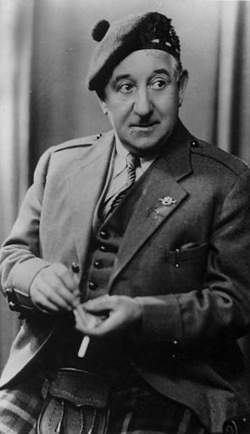 Actor and comedian.
Actor and comedian.He began his stage career in his father's touring theatre company as a child. Moving into music hall and songwriting, his most famous title being I Belong to Glasgow, which led to an engagement in 1920 at the London Palladium. He topped the bill at the Brighton Hippodrome in November 1921. After completing a film in Hollywood in 1939 he returned to England on the outbreak of war and lived in Saltdean. He was in France by December 1939 entertaining the troops. He died when he fell from a window in the hotel he had recently bought in St Andrews.
• White Walls, 13 Founthill Avenue, Saltdean [residence 1939- ]
